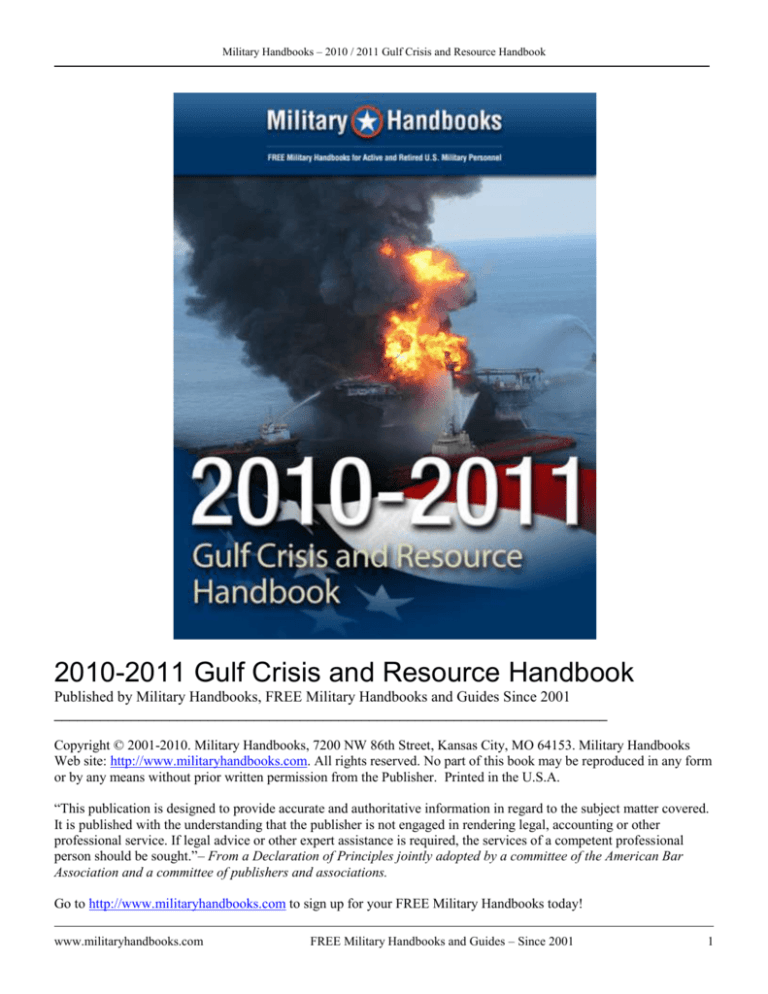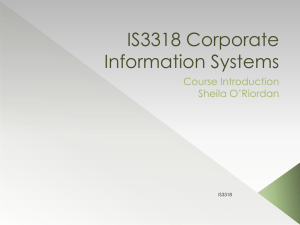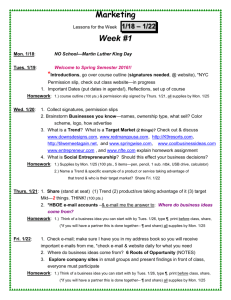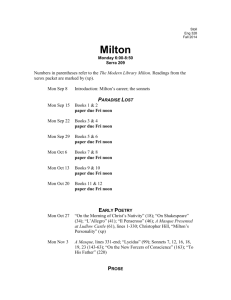
Military Handbooks – 2010 / 2011 Gulf Crisis and Resource Handbook
2010-2011 Gulf Crisis and Resource Handbook
Published by Military Handbooks, FREE Military Handbooks and Guides Since 2001
________________________________________________________________________
Copyright © 2001-2010. Military Handbooks, 7200 NW 86th Street, Kansas City, MO 64153. Military Handbooks
Web site: http://www.militaryhandbooks.com. All rights reserved. No part of this book may be reproduced in any form
or by any means without prior written permission from the Publisher. Printed in the U.S.A.
“This publication is designed to provide accurate and authoritative information in regard to the subject matter covered.
It is published with the understanding that the publisher is not engaged in rendering legal, accounting or other
professional service. If legal advice or other expert assistance is required, the services of a competent professional
person should be sought.”– From a Declaration of Principles jointly adopted by a committee of the American Bar
Association and a committee of publishers and associations.
Go to http://www.militaryhandbooks.com to sign up for your FREE Military Handbooks today!
www.militaryhandbooks.com
FREE Military Handbooks and Guides – Since 2001
1
Military Handbooks – 2010 / 2011 Gulf Crisis and Resource Handbook
Introduction
April 20, 2010 changed the lives of many people, especially residents of the Gulf Coast after the BP Deepwater
Horizon offshore drilling rig exploded, making it the worst environmental disaster in our nation’s history. Lives were
ruined, jobs were lost and many people were looking for answers while rebuilding their lives. This disaster also
prompted us to take a closer look at the way oil rigs were designed as well as policies and procedures for safe
operation.
That is why we created this handbook—to provide you with the essential information to get your life back on track
during this crisis. We have compiled the latest on local, state and Federal resources as well as direct links to all BP
claims offices.
We hope that you find this Coastal Crisis Resources Handbook helpful and we encourage you to share it with others in
need during this difficult time.
– The Military Handbooks Staff
www.militaryhandbooks.com
FREE Military Handbooks and Guides – Since 2001
2
Military Handbooks – 2010 / 2011 Gulf Crisis and Resource Handbook
Background
The Deepwater Horizon oil spill (also referred to as the BP oil spill, the Gulf of Mexico oil spill, the BP oil disaster or
the Macondo blowout) was a massive oil spill in the Gulf of Mexico that was the largest offshore spill in U.S. history
and among the largest oil spills in history. The spill stemmed from a sea-floor oil gusher that resulted from the April
20, 2010 Deepwater Horizon drilling rig explosion. The explosion killed 11 platform workers and injured 17 others.
On July 15th, the leak was largely stopped by capping the gushing oil wellhead. The drilling of relief wells to
permanently close the well is ongoing.
The quasi-official Flow Rate Technical Group estimated the oil well was leaking 35,000 to 60,000 barrels (1,500,000
to 2,500,000 US gallons; 5,600 to 9,500 cubic metres) of crude oil per day. This volume is approximately equal to the
1989 Exxon Valdez oil spill every four to seven days. The exact flow rate is uncertain due to the difficulty of installing
measurement devices at that depth and is a matter of debate. The resulting oil slick covered at least 2,500 square miles
(6,500 km2), fluctuating daily depending on weather conditions. Scientists have also reported immense underwater
plumes of dissolved oil not visible at the surface.
The spill continues to cause extensive damage to marine and wildlife habitats as well as the Gulf's fishing and tourism
industries. Crews have been working to protect hundreds of miles of beaches, wetlands and estuaries along the
northern Gulf coast, using skimmer ships, floating containment booms, anchored barriers, and sand-filled barricades
along shorelines. The U.S. Government has named BP as the responsible party, and officials have committed to
holding the company accountable for all cleanup costs and other damage.
Deepwater Horizon Drilling Rig
The Deepwater Horizon was a 9-year-old semi-submersible mobile offshore
drilling unit, a massive floating, dynamically positioned drilling rig that could
operate in waters up to 8,000 feet (2,400 m) deep and drill down to 30,000 feet
(9,100 m). It was owned by Transocean, operated under the Marshallese flag of
convenience, and was under lease to BP from March 2008 to September 2013.
At the time of the explosion, it was drilling an exploratory well at a water
depth of approximately 5,000 feet (1,500 m) in the Macondo Prospect, located
in the Mississippi Canyon Block 252 of the Gulf of Mexico in the United
States exclusive economic zone about 41 miles (66 km) off the Louisiana
coast. Production casing was being installed and cemented by Halliburton
Energy Services. Once the cementing was complete, the well would have been
tested for integrity and a cement plug set, after which no further activities would take place until the well was later
activated as a subsea producer. BP is the operator and principal developer of the Macondo Prospect with a 65% share,
while 25% is owned by Anadarko Petroleum Corporation, and 10% by MOEX Offshore 2007, a unit of Mitsui. BP
leased the mineral rights for Macondo at the Minerals Management Service's lease sale in March 2008.
www.militaryhandbooks.com
FREE Military Handbooks and Guides – Since 2001
3
Military Handbooks – 2010 / 2011 Gulf Crisis and Resource Handbook
The Explosion – What Happened?
During March and early April, several platform workers and supervisors
expressed concerns with well control. At approximately 9:45 p.m. CDT on
April 20, 2010, methane gas from the well, under high pressure, shot all the
way up and out of the drill column, expanded onto the platform, and then
ignited and exploded. Fire then engulfed the platform. Most of the workers
were evacuated by lifeboats or were airlifted out by helicopter, but eleven
workers were never found despite a three-day Coast Guard search operation,
and are presumed to have died in the explosion. Efforts by multiple ships to
douse the flames were unsuccessful. After burning for approximately 36
hours, the Deepwater Horizon sank on the morning of April 22, 2010.
On the afternoon of April 22, a large oil slick began to spread at the former rig site. Two remotely operated underwater
vehicles (ROVs) unsuccessfully attempted to cap the well. BP announced that it was deploying a ROV to the site to
assess whether oil was flowing from the well. On April 23, a ROV reportedly found no oil leaking from the sunken rig
and no oil flowing from the well. Coast Guard Rear Admiral Mary Landry expressed cautious optimism of zero
environmental impact, stating that no oil was emanating from either the wellhead or the broken pipes and that oil
spilled from the explosion and sinking was being contained. The following day, April 24, Landry announced that a
damaged wellhead was indeed leaking oil into the Gulf and described it as "a very serious spill". BP has not given a
cause for the explosion. According to the US Congressional investigation the rig's blowout preventer, a fail-safe device
fitted at the base of the well, built by Cameron International Corporation, had a hydraulic leak and a failed battery, and
therefore failed.
Spill Flow Rate
In their permit to drill the well, BP estimated the worst case flow at 162,000 barrels (6,800,000 US gallons; 25,800
cubic metres).After the explosion BP and the United States Coast Guard initially estimated that the wellhead was
leaking only 1,000 barrels (42,000 US gallons; 160 cubic metres) per day . Outside scientists quickly produced higher
estimates, which presaged later increases in official numbers. Official estimates increased from 1,000 to 5,000 barrels
(42,000 to 210,000 US gallons; 160 to 790 cubic metres) per day on April 29, to 12,000 to 19,000 barrels (500,000 to
800,000 US gallons; 1,900 to 3,000 cubic metres) per day on May 27, to 25,000 to 30,000 barrels (1,100,000 to
1,300,000 US gallons; 4,000 to 4,800 cubic metres) per day on June 10, and to between 35,000 and 60,000 barrels
(1,500,000 and 2,500,000 US gallons; 5,600 and 9,500 cubic metres), on June 15. Internal BP documents, released by
Congress, estimate the flow could be as much as 100,000 barrels (4,200,000 US gallons; 16,000 cubic metres), if the
blowout preventer and wellhead were removed and if restrictions were incorrectly modeled. (the pipe casing is 21
inches in diameter, with a nine-inch diameter drill pipe inside).
Progression of oil spill flow rate estimates
www.militaryhandbooks.com
FREE Military Handbooks and Guides – Since 2001
4
Military Handbooks – 2010 / 2011 Gulf Crisis and Resource Handbook
Resources and Information
Introduction:
Filing a Claim
The Claim Form is to be completed for individuals and businesses seeking payment incurred as a result of the
Deepwater Horizon Incident on April 20, 2010 and resulting oil discharges (“the Spill”).
Completing the Claim Form
If at any time you need assistance completing the Claim Form, contact the Gulf Coast Claims Facility toll free at
1-800-916-4893 or visit www.GulfCoastClaimsFacility.com. For TTY assistance call 1-866-682-1758
To receive a Claim Form, you may:
1. Download a Claim Form Online at https://cert.tgcginc.com/gccf/online/request_online.php
2. Register to Receive a Claim Form by Mail at https://cert.tgcginc.com/gccf/request_mail.php
3. Call our toll free hotlines and request one be mailed to you:
Toll Free Number: 1-800-916-4893
Multilingual Telephone Line: 1-800-916-4893
TTY Telephone Line: 1-866-682-1758
Claim Form Processes
There are multiple ways to make a claim to the Gulf Coast Claims Facility (GCCF):
1. Internet – You may obtain and submit a claim online by visiting the GCCF website:
www.GulfCoastClaimsFacility.com. Follow the step by step online instructions to complete a claim. Once
the form is completed, the claim will automatically be submitted to the GCCF Database. You will receive
printable confirmation immediately upon submission with a Claimant Identification Number. The Claimant
Identification Number will be the claim identifier throughout the process.
2. In person – By visiting a GCCF Claims Site Office. You may visit one of the 35 GCCF Claims Site Offices to
obtain, sign and submit a claim in person. You may either walk into one of the claims Site Offices or may
make an appointment by calling the toll free telephone line listed above. The locations of the Claims Site
Offices are listed below or at the GCCF website, www.GulfCoastClaimsFacility.com. If a visitor requires an
interpreter, a Claims Evaluator will make arrangements to provide these services either by conference call or a
scheduled return trip to the Claims Site Office. A Claims Evaluator will assist the Claimant in completing the
Claim Form and will submit it for the Claimant. The Claims Evaluator will provide the Claimant with a
confirmation of the claim submission and a Claimant Identification Number. The Claimant Identification
Number will be the claim identifier throughout the process. A Claim may not be submitted by telephoning the
Claims Site Offices.
3. Mail In/Fax/Email – Read all instructions carefully before completing the Claim Form. After reviewing the
instruction, fill out the Claim Form and complete all pertinent information that is relevant to your claim. If
you are only seeking an Emergency Advance Payment at this time, you will have fewer questions to answer.
There are ten parts to the Claim Form. Once the form is complete with all supporting documentation, please
send the form to:
www.militaryhandbooks.com
FREE Military Handbooks and Guides – Since 2001
5
Military Handbooks – 2010 / 2011 Gulf Crisis and Resource Handbook
Gulf Coast Claims Facility (“GCCF”)
Kenneth R. Feinberg, Administrator
P.O. Box 9658
Dublin, OH 43017-4958
U.S. Postal Service:
Overnight, Certified or Registered Mail:
Gulf Coast Claims Facility
Kenneth R. Feinberg, Administrator
5151 Blazer Pkwy., Suite A
Dublin, OH 43017
Fax: 1-888-682-1772
Email: info@gccf-claims.com
For further details on how to complete the Claim Form, please follow the link:
http://www.gulfcoastclaimsfacility.com/Instructions_GCCF_ClaimForm.pdf
Gulf Coast Claims Facility
The Gulf Coast Claims Facility (GCCF) is an independent claims facility for submission and resolution of claims of
Individuals and Businesses for costs and damages incurred as a result of the oil discharges due to the Deepwater
Horizon catastrophe on April 20, 2010 (“The Spill”). BP has agreed to contribute funds to an escrow account to be
used to pay claims submitted to the GCCF. The GCCF is administered by Kenneth R. Feinberg (the “Claims
Administrator”), a neutral fund administrator responsible for all decisions relating to the administration and processing
of claims by the GCCF.
To make an eligible claim for Real or Personal Property, you will need the following:
1. Information or documentation showing an ownership or leasehold interest in the property.
2. Information or documentation showing the property was physically damaged or destroyed as a proximate
result of the Spill.
3. Information or documentation showing the damages claimed were incurred as the result of the physical
damage to or destruction of the property.
4. Information or documentation showing the cost of repair or replacement of the property or economic
losses resulting from destruction of the property.
5. Information or documentation showing the value of the property both before and after the damage.
For assistance with completing your claim form:
Visit one of the GCCF Claims Site Offices listed below
Call Toll Free Number: 1-800-916-4896 / TTY: 1-866-682-1758
Email: info@gccf-claims.com
www.militaryhandbooks.com
FREE Military Handbooks and Guides – Since 2001
6
Military Handbooks – 2010 / 2011 Gulf Crisis and Resource Handbook
Site Locations
Alabama
Bayou La Batre, AL
13290 N. Wintzell Ave
Bayou La Batre, AL 36509 Hours:
8am – 7pm, CT, Mon. - Sun
Dauphin Island, AL
1008 Alabama Ave
Dauphin Island, AL 36528
Hours:
8am – 7pm CT, Mon. – Sun.
Foley, AL
1506 North Mckenzie St.
(Highway 59)
Suite 104
Foley, AL 36542
Hours:
8am – 7pm CT, Mon. – Sun.
Gulf Shores, AL
1709 Gulf Shores Parkway
Gulf Shores, AL 36542
Hours:
8am – 7pm CT, Mon. – Sun.
Mobile, AL
325 East I-65 Service Rd
(Beltline Highway)
Suite 1
Mobile, AL 36608
Hours:
8am – pm CT, Mon. – Sun.
Orange Beach, AL
24039 Perdido Beach Blvd.
Orange Beach, AL
Hours:
8am – 7pm CT, Mon. – Sun.
Florida
Apalachicola, FL
194 14th Street
Suite 105
Apalachicola, FL 32320
Hours:
8am – 7pm ET, Mon. – Sun.
Clearwater, FL
2551 Drew Street
Suite 301
Clearwater, FL 32327
Hours:
8am – 7pm ET, Mon. – Sun.
Crawfordville, FL
3010 Crawfordville
Highway
Suite A&B
348 Miracle Strip S.W.
Parkway
Suite 13
Crawfordville, FL 32327
Hours:
8am – 7pm ET, Mon. – Sun.
Fort Walton Beach, FL
32548
Hours:
8am – 7pm ET, Mon. – Sun.
Gulf Breeze, FL
5668 Gulf Breeze Parkway
Unit B9
Gulf Breeze, FL 32563
Hours:
8am – 7pm ET, Mon. – Sun.
Key Largo, FL
100360 Overseas Highway
Suite 1
Key Largo, FL 33037
Hours:
8am – 7pm ET, Mon. – Sun.
Key West, FL
3722 N. Roosevelt Blvd
Suite H
Key West, FL 33040
Hours:
8am – 7pm ET, Mon. – Sun.
Marathon, FL
7885 Overseas Highway
Marathon, FL 33050
Hours:
8am – 7pm ET, Mon. – Sun.
Naples, FL
4121 E. Tamiami Trail
Naples, FL 32408
Hours:
8am – 7pm ET, Mon. – Sun.
Ft. Walton Beach, FL
www.militaryhandbooks.com
FREE Military Handbooks and Guides – Since 2001
7
Military Handbooks – 2010 / 2011 Gulf Crisis and Resource Handbook
Panama City Beach,
FL
7938 Front Beach Road
Panama City Beach, FL
32408
Hours:
8am – 7pm CT, Mon. – Sun.
Pensacola, FL
3960 West Navy Blvd.
Suite 16-17
Pensacola, FL 32507
Hours:
8am – 7pm CT, Mon. – Sun.
Port St. Joe, FL
106 Trade Circle West
Suite A
Port St. Joe, FL 32456
Hours:
8am – 7pm ET, Mon. – Sun.
Santa Rosa Beach, FL
5008 US Hwy 98 W
Unit 6&7
Santa Rosa Beach, FL
32459
Hours:
8am – 7pm CT, Mon. – Sun.
Louisiana
Cut Off, LA
16263 E. Main Street
Tarpon Heights Shopping
Center; Unit 2
Cut Off, LA 70345
Hours:
8am-7pm CT, Mon.-Sun.
Grand Isle, LA
3811 LA 1
Grand Isle, LA 70358
Hours:
8am-7pm CT, Mon.-Sun.
Gretna/Belle Chasse, LA
2766 Belle Chasse
Highway
Suite A-9
2654 Jean LaFitte
Boulevard
Gretna, LA 70056
Hours:
8am-7pm CT, Mon.-Sun.
Houma, LA 70363
Hours:
8am-7pm CT, Mon.-Sun.
Lafitte, LA
2654 Jean LaFitte
Boulevard
LaFitte, LA 70067
Hours:
8am-7pm CT, Mon.-Sun.
Morgan City, LA
889 US Highway 90
Morgan City, LA 70380
Hours:
8am-7pm CT, Mon.-Sun.
New Iberia, LA
956 S. Lewis Street
New Iberia, LA 70560
Hours:
8am-7pm CT, Mon.-Sun.
New Orleans East, LA
4375 Michoud Boulevard
New Orleans, LA 70129
Hours:
8am-7pm CT, Mon.-Sun.
Pointe a la Hache, LA
1553 Highway 15
Pointe a la Hache, LA
70040
Hours:
8am-7pm CT, Mon.-Sun.
Slidell, LA
1300 Gause Boulevard
Suite A5&6
Slidell, LA 70458
Hours:
8am-7pm CT, Mon.-Sun.
St. Bernard, LA
3132 E. Judge Perez Drive
Suite D
Meraux, LA 70075
Hours:
8am-7pm CT, Mon.-Sun.
Venice, LA
P.O. Box 369
41093 Highway LA 23
Boothville, LA 70038
Hours:
8am-7pm CT, Mon.-Sun.
Houma, LA
www.militaryhandbooks.com
FREE Military Handbooks and Guides – Since 2001
8
Military Handbooks – 2010 / 2011 Gulf Crisis and Resource Handbook
Mississippi
Bay St. Louis, MS
1171 Hwy 90 Bay
St. Louis, MS 39520
Biloxi, MS
15812 Lemoyne Boulevard
Biloxi, MS 39532
Pascagoula, MS
5912 Old Mobile Highway
Suites 3 & 4
Pascagoula, MS 39581
Hours:
8am-7pm CT, Mon.-Sun.
Hours:
8am-7pm CT, Mon.-Sun.
Hours:
8am-7pm CT, Mon.-Sun.
Texas
Galveston, TX
2001 Post Office Street
Unit #2
Galveston, TX 77553
Hours:
8am-7pm CT, Mon.-Sun.
After you have filed a claim
The Gulf Coast Claims Facility will process your claim for the costs or damages you incurred as submitted on your
Claim Form. You will receive written notification regarding any action taken on your claim, including approved
amounts, deficiencies, requests for additional documentation, and denied claims.
NOTE * If you have made a claim for an Emergency Advance Payment, the GCCF will notify you by email
or written notice if your claim is incomplete and will tell you what documentation is needed to evaluate and
complete the claim. If your claim for an Emergency Advance Payment is complete and eligible you will
receive either a check or a wire transfer, depending on the method of payment you selected when you
submitted your Claim Form.
If you have made a claim for Final Payment, the GCCF will notify you when your Claim Form and
documentation are sufficiently complete for processing.
Calculating Payments
If your claim is for direct damages resulting from the Spill, you will receive compensation for the amount of
damages, costs or lost earnings or profits that you are able to prove with acceptable documentation. If your
claim is for indirect economic damages, the GCCF will evaluate whether your claim is compensable and the
appropriate amount of compensation based on geographic proximity to the Spill, whether you are dependent
on injured natural resources, and the nature of your business. The GCCF will evaluate all claims based on the
information and documentation received and will provide you with notice of any deficiencies that you need
to cure to receive additional compensation.
NOTE* Payments will be issued through one central payment distribution center and will be sent to
claimants by overnight delivery. However, you can elect to receive your payment as a wire transfer directly
to your bank account.
For individuals who do not have their own bank account, the GCCF has made arrangements with Whitney
National Bank for check-cashing services. Whitney National Bank has branches located throughout the
affected region. If you are an Individual and not a Business, and you do not have your own bank account,
you may go to any branch of Whitney National Bank and cash up to $5,000 of your payment in one day. (No
fee will be charged by Whitney National Bank for this service.)
www.militaryhandbooks.com
FREE Military Handbooks and Guides – Since 2001
9
Military Handbooks – 2010 / 2011 Gulf Crisis and Resource Handbook
Removal and Clean Up Cost
Removal and Clean Up costs are the costs that individuals took to prevent, minimize, or mitigate the
damages or anticipated damages associated from the Spill.
Individuals or Businesses that have incurred costs to remove oil discharged by the Spill and/or costs to
prevent, minimize or mitigate oil pollution when there is a substantial threat of a discharge of oil due to the
Spill may make a claim. To be paid for these costs, the actions taken must have been approved by the
Federal On-Scene Coordinator or are otherwise consistent with the National Contingency Plan.
The GCCF will compensate you for the reasonable costs associated with actions approved by the Federal
On-Scene Coordinator or are otherwise proven to be consistent with the National Contingency Plan to
remove oil discharged by the Spill and/or costs to prevent, minimize or mitigate the effects of the Spill. To
determine this amount, the GCCF will calculate the total cost by reviewing contractor invoices, proofs of
payment, contractor daily logs, disposal manifests, affidavits or witness statements, or other documentation
you submit.
NOTE* For those individuals who have incurred damages to their property after it has already been cleaned,
you are welcome to make another claim. If you wish to request a subsequent Emergency Advance Payment
for the same claim, you must fill out and submit a Supplemental Request Form for Emergency Advance
Payment. You must provide your name and Claimant Identification Number, the amount you are claiming as
a subsequent Emergency Advance Payment, the amount you previously received, responses to questions
regarding your claim, your signature, and supporting documentation. You will need to provide
documentation for your costs incurred.
Lost Profits and Earning Capacity
GCCF will provide for Lost Profits and Earning Capacity for qualifying claimants. Lost Earnings occur
when you experience a loss of or reduction in your ability to earn wages or income because of the Spill. If
you were unable to engage in your normal job because of the Spill or made less money than usual because of
the Spill, you may have experienced Lost Earnings. Lost Profits are loss of income or profits by a Business.
If your Business experienced a temporary or permanent loss or reduction in profits due to the Spill, you can
make a claim for Lost Profits. Your Business may also have experienced Lost Profits if it was forced to
operate under different conditions than those that existed prior to the Spill.
NOTE* The following is what you will need to make an eligible Lost Earnings or Profit Claim:
1. Identify the specific Real Property, Personal Property or natural resources injured, destroyed or lost
due to the Spill
2. Show that you lost earnings or profits as a result of the injury, destruction or loss of the specific
property or natural resources.
www.militaryhandbooks.com
FREE Military Handbooks and Guides – Since 2001
10
Military Handbooks – 2010 / 2011 Gulf Crisis and Resource Handbook
Physical Injury or Death
To make an eligible claim for Physical Injury or Death, you must provide the following:
1.
2.
3.
4.
5.
6.
Medical records reflecting diagnosis by medical practitioner, or death certificate.
Cause of injury.
Location where injury occurred.
Evidence of total or partial disability.
Expenditures for medical care not otherwise compensated.
If you are claiming loss of income, proof of lost income.
NOTE* If your physical injury is ongoing, you may apply for an Emergency Advance Payment for medical
expenses or loss of income you have incurred. Once the full effects of your physical injury are known and/or
resolved, you can choose to apply for and receive Final Payment for your claim.
If English is not your first language, below is a list of site locations for translation services.
Site Locations for Spanish (Espanola)
Bayou La Batre, AL
13290 N. Wintzell Ave
Bayou La Batre, AL 36509
Hours:
8am – 7pm, CT, Mon. – Sun.
Biloxi, MS
15812 Lemoyne Boulevard
Biloxi, MS 39532
Hours:
8am-7pm CT, Mon.-Sun.
Clearwater, FL
2551 Drew Street
Suite 301
Clearwater, FL 32327
Hours:
8am – 7pm ET, Mon. – Sun.
Cut Off, LA
16263 E. Main Street
Tarpon Heights Shopping
Center; Unit 2
Cut Off, LA 70345
Hours:
8am-7pm CT, Mon.-Sun.
Gretna/Belle Chasse, LA
2766 Belle Chasse Highway
Suite A-9
Gretna, LA 70056
Hours:
8am-7pm CT, Mon.-Sun.
Gulf Breeze, FL
5668 Gulf Breeze Parkway
Unit B9
Gulf Breeze, FL 32563
Hours:
8am – 7pm ET, Mon. – Sun.
Houma, LA
2654 Jean LaFitte Boulevard
Houma, LA 70363
Hours:
8am-7pm CT, Mon.-Sun.
Lafitte, LA
2654 Jean LaFitte Boulevard
LaFitte, LA 70067
Hours:
8am-7pm CT, Mon.-Sun.
Mobile, AL
325 East I-65 Service Rd
(Beltline Highway)
Suite 1
Mobile, AL 36608
Hours:
8am – pm CT, Mon. – Sun.
New Iberia, LA
956 S. Lewis Street
New Iberia, LA 70560
Hours:
8am-7pm CT, Mon.-Sun.
Orange Beach, AL
24039 Perdido Beach Blvd.
Orange Beach, AL
Hours:
8am – pm CT, Mon. – Sun.
www.militaryhandbooks.com
FREE Military Handbooks and Guides – Since 2001
11
Military Handbooks – 2010 / 2011 Gulf Crisis and Resource Handbook
Pointe a la Hache, LA
1553 Highway 15
Pointe a la Hache, LA 70040
Hours:
8am-7pm CT, Mon.-Sun.
Santa Rosa Beach, FL
5008 US Hwy 98 W
Unit 6&7
Santa Rosa Beach, FL 32459
Hours:
8am – 7pm CT, Mon. – Sun.
Venice, LA
P.O. Box 369
41093 Highway LA 23
Boothville, LA 70038
Hours:
8am-7pm CT, Mon.-Sun.
Bayou La Batre, AL 36509
Hours:
8am – 7pm, CT, Mon. – Sun.
Site Locations for Vietnamese (Bằng Tiếng Việt )
Bayou La Batre, AL
13290 N. Wintzell Ave
Bay St. Louis, MS
1171 Hwy 90 Bay
St. Louis, MS 39520
Hours:
8am-7pm CT, Mon.-Sun.
Biloxi, MS
15812 Lemoyne Boulevard
Biloxi, MS 39532
Hours:
8am-7pm CT, Mon.-Sun.
Gretna/Belle Chasse, LA
2766 Belle Chasse Highway
Suite A-9
Gretna, LA 70056
Hours:
8am-7pm CT, Mon.-Sun.
Houma, LA
2654 Jean LaFitte Boulevard
Houma, LA 70363
Hours:
8am-7pm CT, Mon.-Sun.
Mobile, AL
325 East I-65 Service Rd
(Beltline Highway)
Suite 1
Mobile, AL 36608
Hours:
8am – pm CT, Mon. – Sun.
New Orleans East, LA
4375 Michoud Boulevard
New Orleans, LA 70129
Hours:
8am-7pm CT, Mon.-Sun.
Pascagoula, MS
5912 Old Mobile Highway
Suites 3 & 4
Pascagoula, MS 39581
Hours:
8am-7pm CT, Mon.-Sun.
Venice, LA
P.O. Box 369
41093 Highway LA 23
Boothville, LA 70038
Hours:
8am-7pm CT, Mon.-Sun.
P.O. Box 369
41093 Highway LA 23
Boothville, LA 70038
Hours:
8am-7pm CT, Mon.-Sun.
Site Locations for Khmer
Venice, LA
For further information about the Coastal Crisis Resources that are available to you, please visit
http://www.gulfcoastclaimsfacility.com/index. This website provides detailed information about how to file a
claim, how to check the current status of a claim, and answers to questions about the process. If you are
interested in making a claim you should review this website, call our toll-free helpline at 1-800-916-4893
(for TTY assistance call1-866-682-1758), or email us at info@gccf-claims.com.
www.militaryhandbooks.com
FREE Military Handbooks and Guides – Since 2001
12
Military Handbooks – 2010 / 2011 Gulf Crisis and Resource Handbook
Emergency Preparedness
Everyone faces the risk of a natural disaster and the hardships that follow. For that reason, it is important to prepared
and ready for any situation that may arise. Since natural disasters can happen anytime or anywhere, you and your
family can never be too prepared for such an event. Having a plan of action and the right materials is a great way to
ensure that you and your loved ones are ready to take action. There are many hazards that one can plan for:
Hurricane
Earthquake
Fire
Flood
Hazardous
Material
Dam Failure
Landslide
Nuclear Power Plant
Emergency
Terrorism
Thunderstorm
Tornado
Tsunami
Volcano
Wildfire
Winter Storm
Heat
Below are some helpful tips on how to prepare for an emergency.
1.
Plan an escape route: Draw a floor plan of your home. Use a blank sheet of paper for each
floor. Mark two escape routes from each room. Make sure children understand the drawings.
Post a copy of the drawings at eye level in each child’s room.
Where to Meet
Establish a place to meet in the event of an emergency, such as a fire. Record the locations
below:
Location
Where to meet...
Near the home
For example, a specific landmark near a neighbor’s home
Outside the immediate area
For example, the neighborhood grocery store parking lot
2.
Have an evacuation plan: When community evacuations become necessary, local officials
provide information to the public through the media. In some circumstances, other warning
methods, such as sirens or telephone calls, also are used. The amount of time you have to
leave will depend on the hazard. If the event is a weather condition, such as a hurricane that
can be monitored, you might have a day or two to get ready. However, many disasters allow
for very little time for people to gather even the most basic necessities, which is why planning
ahead is essential.
Evacuation Guidelines
Always:
If time permits:
Keep a full tank of gas in your car if an evacuation Gather your disaster supplies kit.
seems likely. Gas stations may be closed during
emergencies and unable to pump gas during power
www.militaryhandbooks.com
FREE Military Handbooks and Guides – Since 2001
13
Military Handbooks – 2010 / 2011 Gulf Crisis and Resource Handbook
outages. Plan to take one car per family to reduce
congestion and delay.
Make transportation arrangements with friends or
your local government if you do
not own a car.
Wear sturdy shoes and clothing
that provides some protection,
such as long pants, long-sleeved shirts, and a cap.
Listen to a battery-powered radio and follow local
evacuation instructions.
Secure your home:
Close and lock doors and windows.
Unplug electrical equipment, such as radios and
televisions, and small appliances, such as toasters
and microwaves. Leave freezers and refrigerators
plugged in unless there is a risk of flooding.
Gather your family and go if you are instructed to
evacuate immediately.
3.
4.
Let others know where you are going.
Family communications: Your family may not be together when disaster strikes, so plan how
you will contact one another. Think about how you will communicate in different situations.
Utility Shut-off and Safety: In the event of a disaster, you may be instructed to shut off the
utility service at your home.
5.
Natural Gas
Water
Electricity
Insurance and Vital Records: Obtain property, health, and life insurance if you do not have
them. Review existing policies for the amount and extent of coverage to ensure that what you
have in place is what is required for you and your family for all possible hazards. It is
important to have records of the following:
6.
Flood Insurance Policy
Inventory of Home Possessions
Important Documents
Money
Disability or Special Need: If you or someone close to you has a disability or a special need,
you may have to take additional steps to protect yourself and your family in an emergency.
www.militaryhandbooks.com
FREE Military Handbooks and Guides – Since 2001
14
Military Handbooks – 2010 / 2011 Gulf Crisis and Resource Handbook
Disability/Special Need
Additional Steps
Visually impaired
May be extremely reluctant to leave familiar surroundings when
the request for evacuation comes from a stranger. A guide dog
could become confused or disoriented in a disaster. People who
are blind or partially sighted may have to depend on others to
lead them, as well as their dog, to safety during a disaster.
Hearing impaired
May need to make special arrangements to receive warnings.
Mobility impaired
May need special assistance to get to a shelter.
Single working parent
May need help to plan for disasters and emergencies.
Non-English speaking persons
May need assistance planning for and responding to emergencies.
Community and cultural groups may be able to help keep people
informed.
People without vehicles
May need to make arrangements for transportation.
People with special dietary needs
Should take special precautions to have an adequate emergency
food supply.
People with medical conditions
Should know the location and availability of more than one
facility if dependent on a dialysis machine or other life-sustaining
equipment or treatment.
People with intellectual disabilities
May need help responding to emergencies and getting to a
shelter.
People with dementia
Should be registered in the Alzheimer’s Association Safe Return
Program
7.
Pet Owners: If you evacuate your home, DO NOT LEAVE YOUR PETS BEHIND! Pets
most likely cannot survive on their own; and if by some remote chance they do, you may not
be able to find them when you return.
Below are some helpful tips on how to plan for Pet Disaster Needs:
Identifying shelter. For public health reasons, many emergency shelters cannot accept pets. Find out
which motels and hotels in the area you plan to evacuate to allow pets -- well in advance of needing
them. There are also a number of guides that list hotels/motels that permit pets and could serve as a
starting point. Include your local animal shelter's number in your list of emergency numbers -- they
might be able to provide information concerning pets during a disaster.
Take pet food, bottled water, medications, veterinary records, cat litter/pan, can opener, food dishes,
first aid kit and other supplies with you in case they're not available later. While the sun is still shining,
consider packing a "pet survival" kit which could be easily deployed if disaster hits.
Make sure identification tags are up to date and securely fastened to your pet's collar. If possible, attach
the address and/or phone number of your evacuation site. If your pet gets lost, his tag is his ticket home.
Make sure you have a current photo of your pet for identification purposes.
Make sure you have a secure pet carrier, leash or harness for your pet so that if he panics, he can't
escape.
www.militaryhandbooks.com
FREE Military Handbooks and Guides – Since 2001
15
Military Handbooks – 2010 / 2011 Gulf Crisis and Resource Handbook
8.
Animals in Emergencies for Owners This video, developed by the Chemical Stockpile Emergency
Preparedness Program (CSEPP) /FEMA, is intended to help pet and livestock owners prepare to protect
their animals during emergencies.
Information for Livestock Owners: If you have large animals such as horses, cattle, sheep, goats,
or pigs on your property, be sure to prepare before a disaster.
Preparation Guidelines:
Ensure all animals have some form of identification that will help facilitate their return.
Evacuate animals whenever possible. Arrangements for evacuation, including routes and host sites, should be made in
advance. Alternate routes should be mapped out in case the planned route is inaccessible.
The evacuation sites should have or be able to readily obtain food, water, veterinary care, handling equipment and
facilities.
Make available vehicles and trailers needed for transporting and supporting each type of animal. Also make available
experienced handlers and drivers.
Note: It is best to allow animals a chance to become accustomed to vehicular travel so they are less frightened and easier
to move.
If evacuation is not possible, a decision must be made whether to move large animals to available shelter or turn them
outside. This decision should be determined based on the type of disaster and the soundness and location of the shelter
(structure).
As you and your family prepare and become more aware of what steps you need to take in order to make sure that everyone
remains safe during a natural disaster, be sure that you are conscious of all options and necessary precautions that you can take.
Before disaster strikes, ask yourself one question: Are you prepared?
For further information on preparation and detailed information on what you can do further, please visit
http://www.fema.gov/index.shtm.
www.militaryhandbooks.com
FREE Military Handbooks and Guides – Since 2001
16









